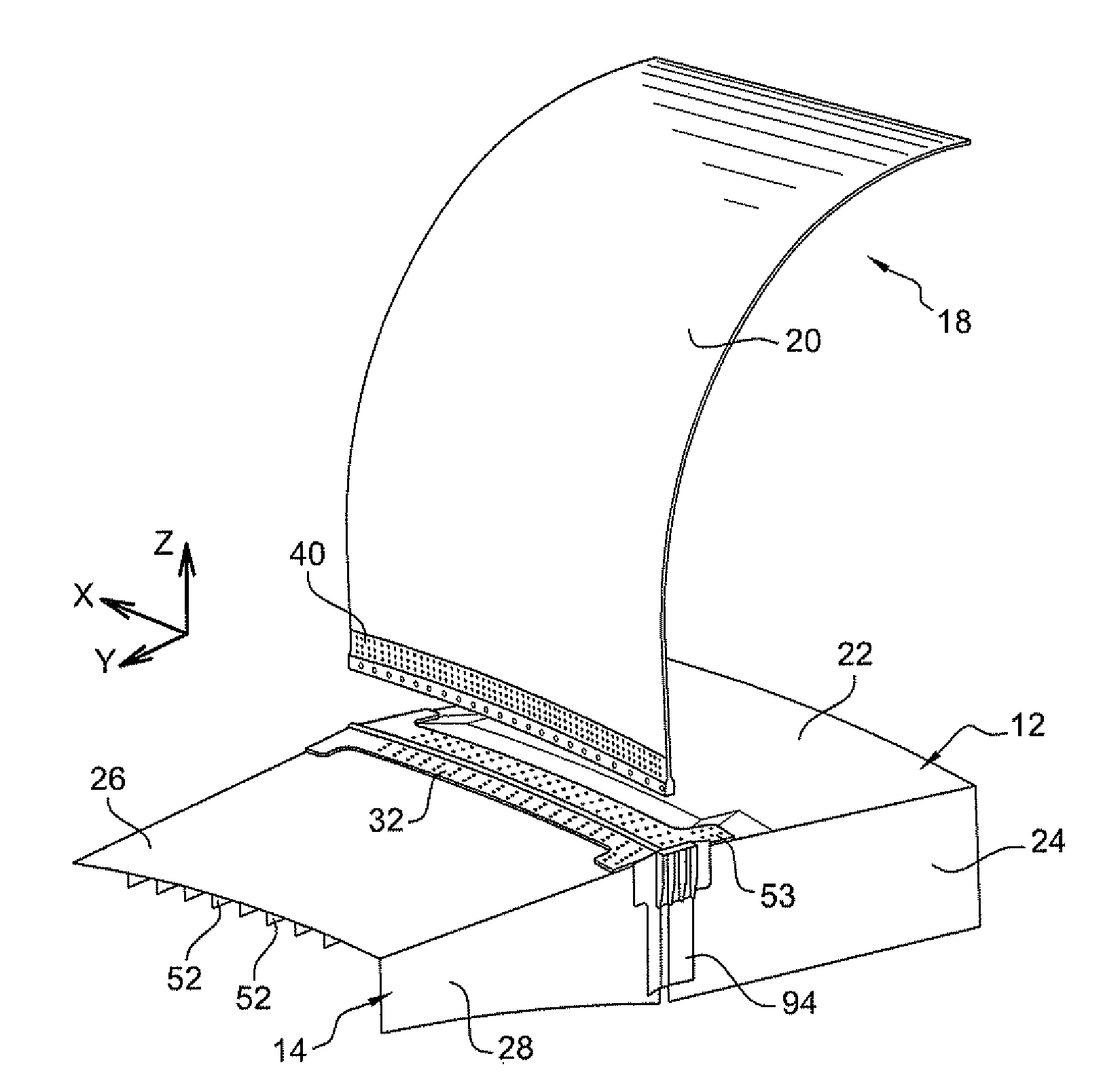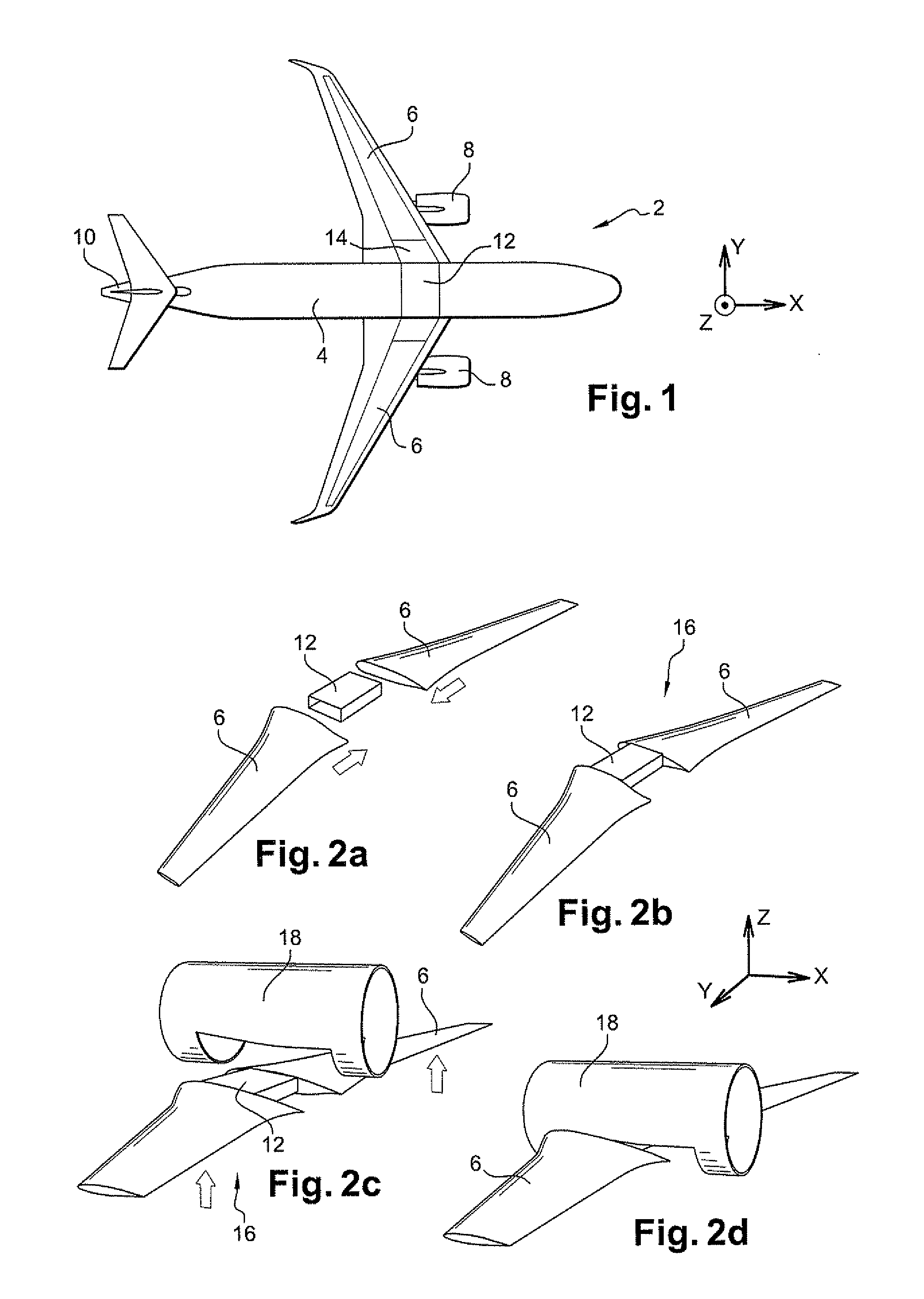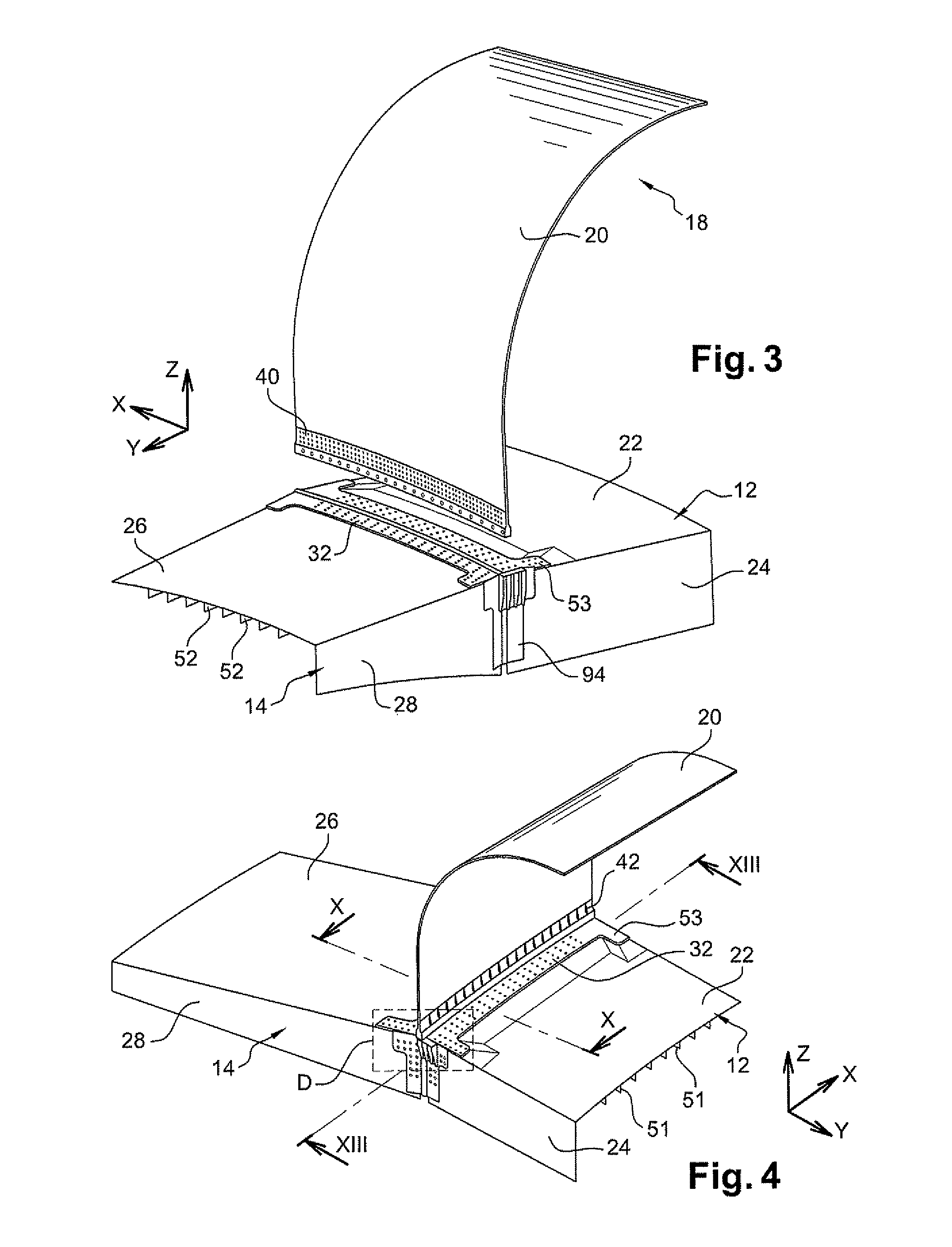Method of constructing a fixed-wing aircraft
a technology for fixed-wing aircraft and wings, which is applied in the field of aircraft structure, can solve the problems of high number of parts needed for assembling the wings to the fuselage and the awkwardness of fastening operation, and achieve the effect of reducing the time and simplifying the assembly of the wings
- Summary
- Abstract
- Description
- Claims
- Application Information
AI Technical Summary
Benefits of technology
Problems solved by technology
Method used
Image
Examples
Embodiment Construction
[0044]In the embodiment shown in FIG. 1, the aircraft of the invention is an aerodyne, and specifically an airplane 2. It comprises a fuselage 4, two wings 6, each carrying an engine 8, a tail 10, and a central wing box 12. The wing box is generally in the form of a rectangular parallelepiped. Each of the wings 6 includes at its proximal end adjacent to the fuselage a respective lateral wing box 14. The wings are fastened to the fuselage via the lateral boxes that are fastened to the central box 12. Below, the conventional X, Y, Z frame of reference is used in which the direction X is horizontal and parallel to the flying direction of the airplane, the direction Y is horizontal and perpendicular to the direction X, while the direction Z is vertical. Over the major fraction of its length, the fuselage is in the form of a tapering cylinder of generally circular cross-section with its axis parallel to the direction X.
[0045]The airplane shown is a commercial airliner. It is suitable for...
PUM
| Property | Measurement | Unit |
|---|---|---|
| distance | aaaaa | aaaaa |
| distance | aaaaa | aaaaa |
| diameter | aaaaa | aaaaa |
Abstract
Description
Claims
Application Information
 Login to View More
Login to View More - R&D
- Intellectual Property
- Life Sciences
- Materials
- Tech Scout
- Unparalleled Data Quality
- Higher Quality Content
- 60% Fewer Hallucinations
Browse by: Latest US Patents, China's latest patents, Technical Efficacy Thesaurus, Application Domain, Technology Topic, Popular Technical Reports.
© 2025 PatSnap. All rights reserved.Legal|Privacy policy|Modern Slavery Act Transparency Statement|Sitemap|About US| Contact US: help@patsnap.com



